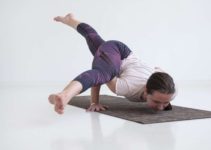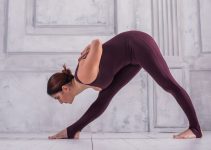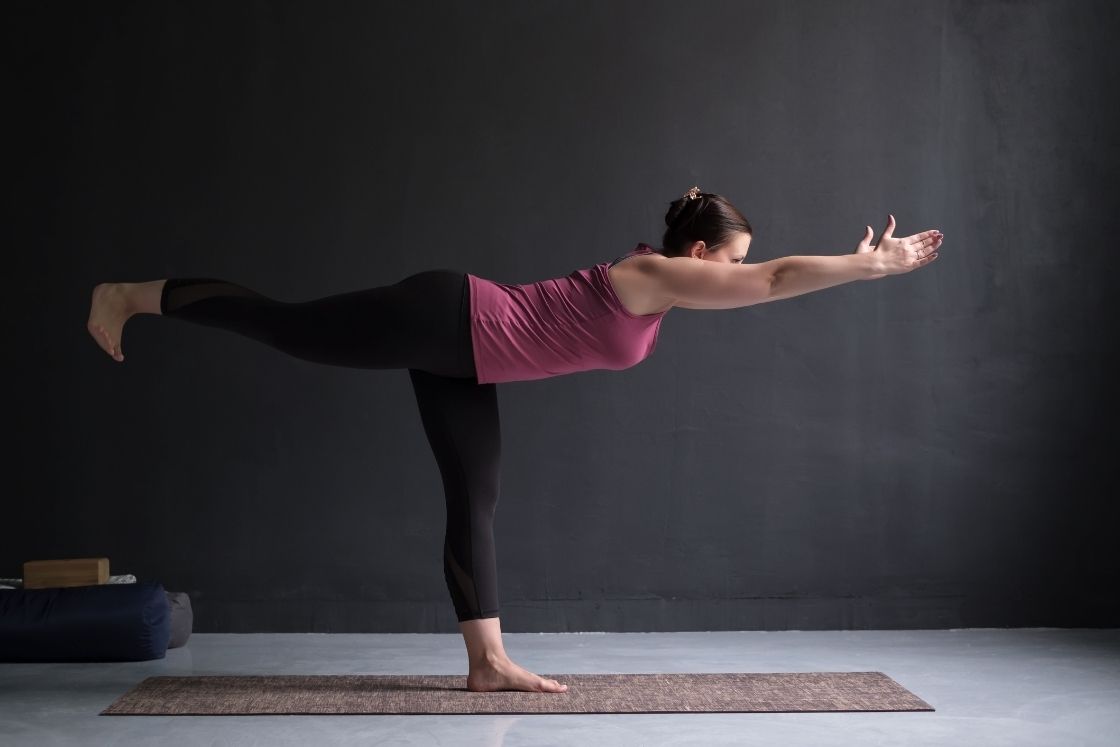
Warrior 3 is one of the most dynamic balancing standing yoga postures. It focuses on providing strength and integrity to the core, arms, and legs. It is a bit more challenging and advanced than warrior 1 & warrior 2 so comes under the intermediate pose.
Holding this pose just for a few breaths improves posture and maintains stability by providing full-body coordination. Accessing all the benefits associated with this asana demands regular practice and proper follow up.
The pose adds the fierceness and grace to the attitude of yogis. Apart from all the physical benefits, it clears the mental as well as emotional blocks.
Virabhadrasana 3 Meaning
To understand the meaning of Virabhadrasana 3 it’s better to see it as a combination of three Sanskrit words:
- ‘Vira’ means hero/ warrior, ‘Bhadra’ means ‘friend’, and ‘Asana’ is a pose.
Mythological origin:
Virabhadrasana 3 is named after a fierce warrior named Virabhadra, who was created by Lord Shiva out of rage towards Daksha. The story has been portrayed in three major instances in which Virabhadra attacks Daksha by the command of Shiva.
Warrior pose III is like impersonating the incident when finally Virabhadra takes his sword to cut off Daksha’s head. The tale better describes the meaning behind the name of the asana.
Combining the meaning and mythological belief, the pose is intense and requires full-body coordination.
Warrior 3 Practice Guide
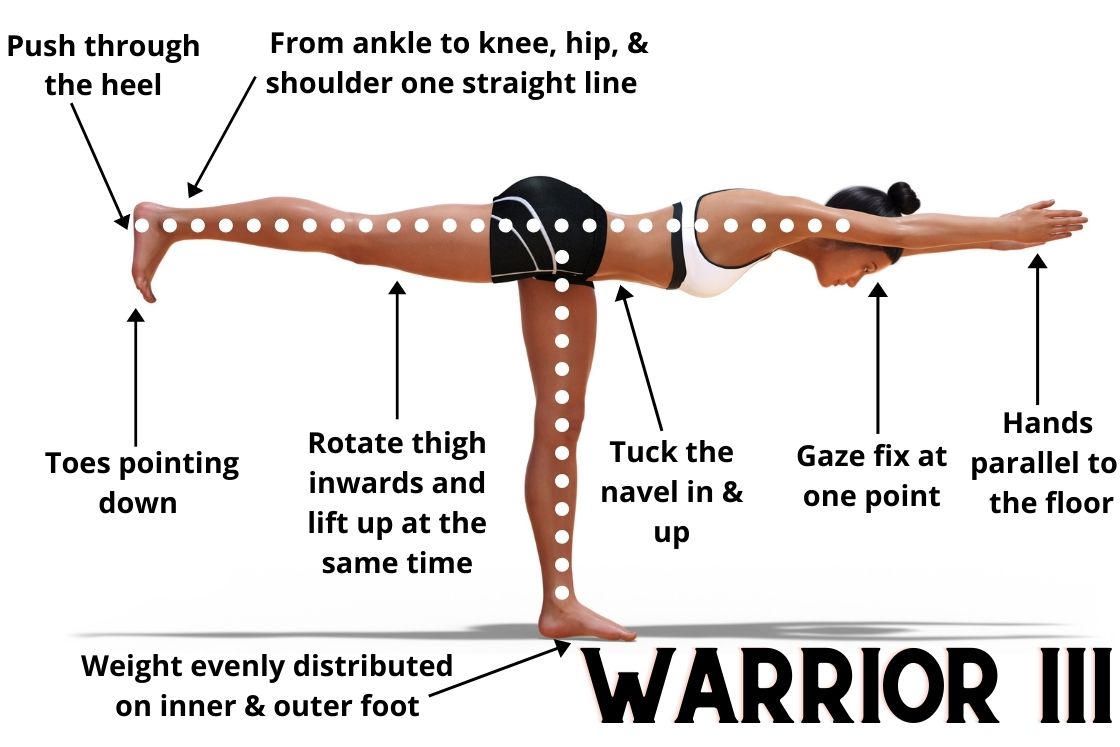
Before performing warrior pose 3, go through the following points to practice it safely.
Contraindications
- Warrior 3 pose is not suitable for people with high blood pressure. The sudden blood flow to the brain while performing the pose could create problems for such people.
- Never practice virabhadrasana 3 if you have spondylitis, the pose is too intense to handle with such a serious back problem.
- Avoid its practice if there is a chronic leg, hip, back, or shoulder injury.
- Do not practice virabhadrasana III during pregnancy.
Preparatory Poses
These poses before performing the warrior pose 3 are advised to prepare the body for practice:
- Half-moon pose (Ardha Chandrasana)
- Chair Pose (Utkatasana)
- Standing Forward Bend (Uttanasana)
- Warrior Pose I (Virabhadrasana I)
- Warrior Pose II (Virabhadrasana II)
- Tree Pose (Vrikshasana)
How to Do Warrior 3 Pose (Steps)
- Initiate standing in the mountain pose and take a deep breath.
- Bring the right foot forward shifting all the bodyweight to it.
- Taking a deep breath in, raise your arms, opening the fingers, and stretch arms upwards to the ceiling.
- Exhale and lift the left leg up to the hip level.
- Along with lifting the left leg the arms will come down. Keep them parallel to the ground.
- Align the left leg with the torso. Keep the right leg firm and strong.
- The body will be represented in a T-form.
- Look at the ground, keeping the eyes fixed to a particular point helps in maintaining the balance.
- Hold the posture for 2-3 breaths.
- Now begin raising the arms along with taking the left leg back to the wall.
- Bring the arms down and relax in mountain pose for 2-3 breaths.
Repeat all the above-mentioned steps switching the legs.
Beginner’s tips
Warrior Pose III is quite intense especially to beginners as it is about balancing the whole body while standing on one leg. Beginners can use the following tips to ease virabhadrasana 3:
- Keep the standing leg a little bent, it will prevent the wobble or instability of the body.
- Have a firm grip on the standing leg. For this, press your standing leg’s inner & outer foot evenly on the ground.
- Focus on a particular point by fixing the gaze it also adds to balance the body weight.
- Fully involve the core while maintaining the posture.
Follow up Poses
Warrior Pose 3 Modifications
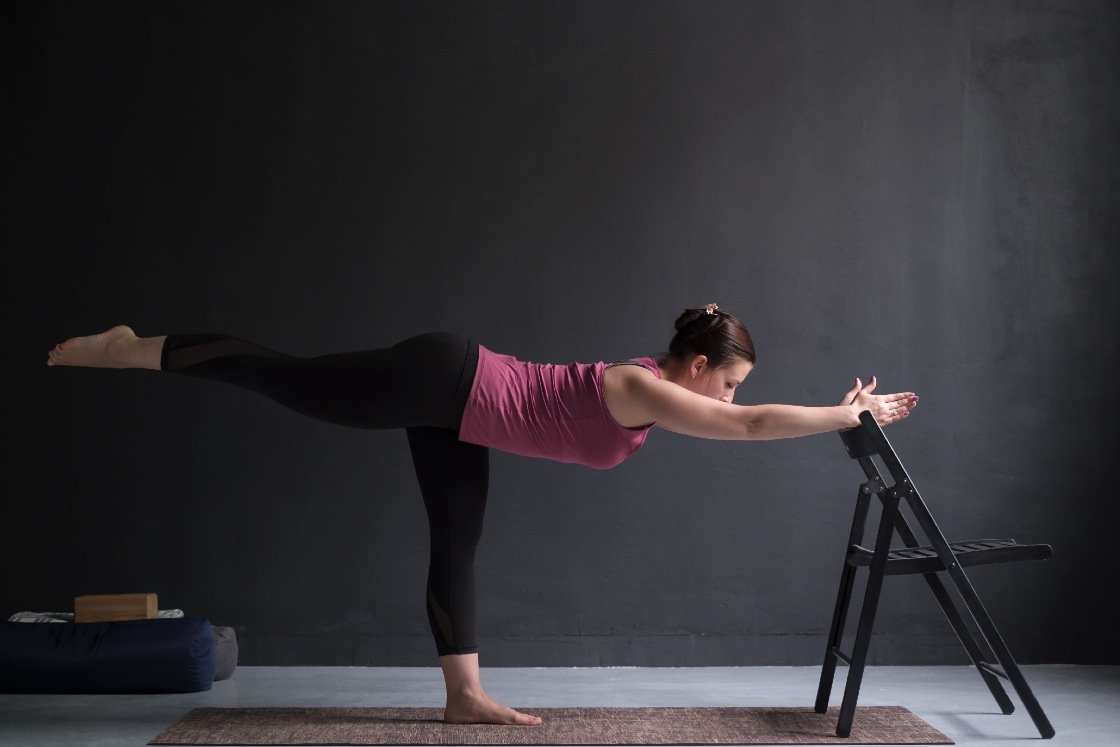
Practicing warrior pose III involving some props could make it less intense. Get started with the following:
- Using a chair – Keep a chair ahead of you sticking close to your mat with its back facing you. Use the top portion of the chair for holding while stretching the hands forward. As you learn to stretch, fully slide the chair away from you and rest your palms on it to take support.
- Against a wall – Similar to the chair, the wall could be used as support either for the arms or for the lifted leg.
- Using blocks – Take two yoga blocks each for a hand and place them on your mat. Start with balancing the hands on the blocks without slouching and take the left foot back. When everything is aligned raise your left leg. Then gradually add the arm movement to it by lifting the arms one-by-one.
- Yoga strap – After reaching a balanced state in warrior III, using a yoga strap could be your thing. Create a loop via strap large enough to cover you from the heel up to the hip bone entirely. While maintaining the balance on the right leg put the strap below the left heel and reach it to the right hip bone. Uplift the left leg with the strap creating the extra stretch
Variations
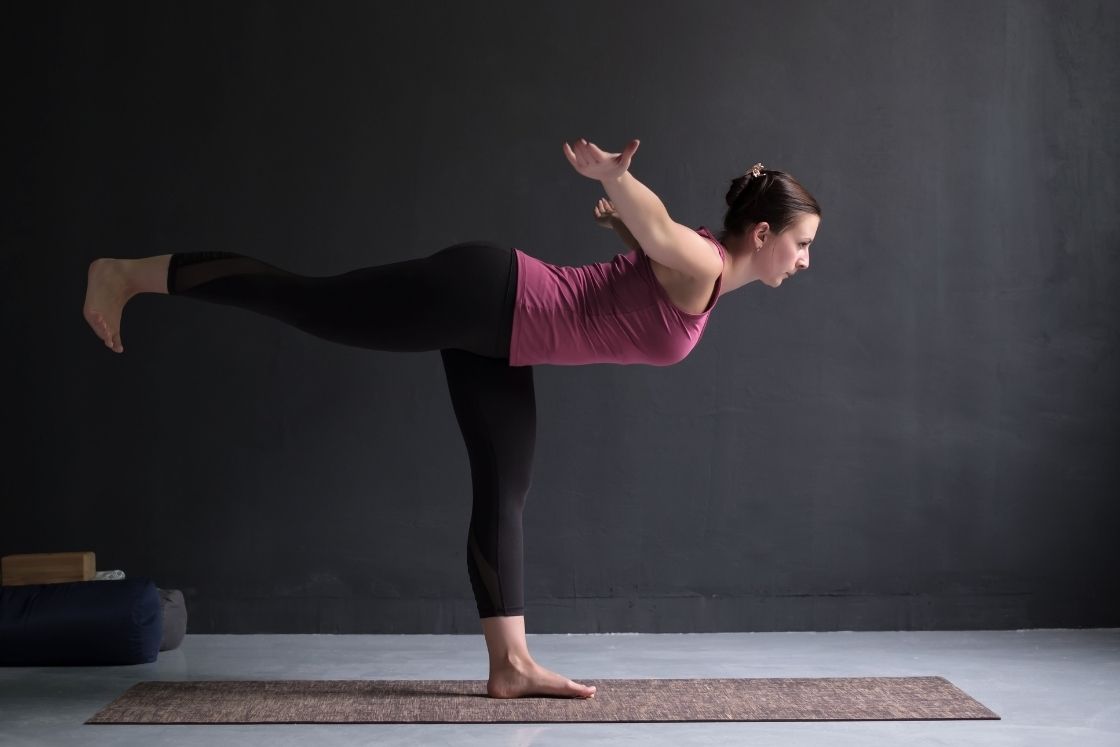
Warrior 3 pose can be practiced in a different manner with these variations in the basic pose;
- A couple of changes to the position of arms could be implemented while holding warrior pose III. Try spreading them sideways like the wings to fly. Another thing is to shift them backward with the palms facing up.
- One can join both the extended hands as a prayer position (Anjali Mudra) while maintaining the forward stretch.
- Interlock the fingers of the hands and then point the index fingers forward forming the Kali mudra. This is another variation of reaching the warrior pose III.
Warrior 3(Virabhadrasana 3) Benefits
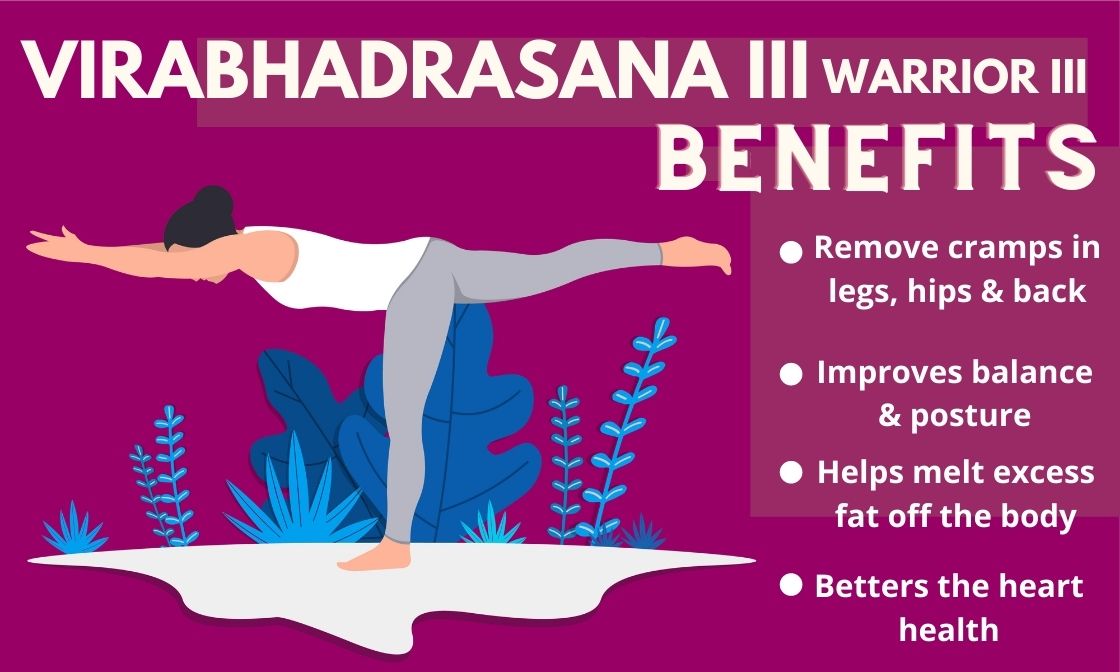
1. Activates lower body muscles
In Virabhadrasana 3, the body weight is maintained on one leg providing it the endurance. It works out the whole lower body and activates the muscles that strengthen the ankles, legs, and whole lower body [efn_note] A comparison of EMG output of four lower extremity muscles during selected yoga postures https://www.bodyworkmovementtherapies.com/article/S1360-8592(19)30059-2/fulltext [/efn_note]. It improves the flexibility of the body.
2. Reduces body fat
The intensity of warrior pose 3 is so high that it generates heat in the body. Thus, the pose is preferred for burning extra fat. It leaves the body fit and toned.
3. Improves focus
This asana enhances the focus and concentration of the practitioner. It creates mindfulness and allows us to focus on the present, clearing the mind.
4. Betters the heart health
The asana is intense enough to increase the rate of oxygen consumption. It enhances cardiovascular endurance. Experimental studies [efn_note]Effects of a 12-Week Hatha Yoga Intervention on Cardiorespiratory Endurance, Muscular Strength https://www.ncbi.nlm.nih.gov/pmc/articles/PMC4475706/ [/efn_note] showed the proof that virabhadrasana III when combined with other standing poses improves heart rate.
5. Sharpens the memory
Warrior pose III is all about focusing and concentration. With its regular practice, the memory revitalizes and becomes sharp. Thus by enhancing concentration power it brings benefits to memory cells.
Conclusion
Master the warrior pose III with all the guidelines. Despite being intimidating and intense the asana is worth it to practice. Overcome the fear and start practicing virabhadrasana III to reach and maintain the posture with grace.
